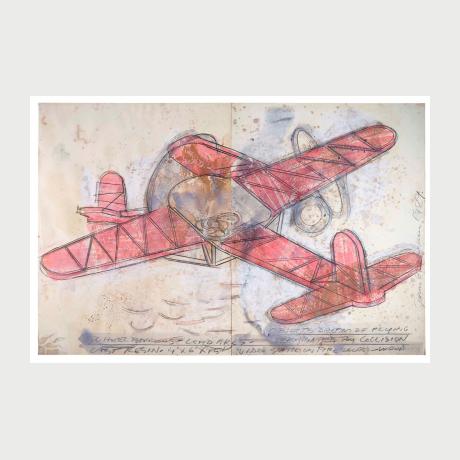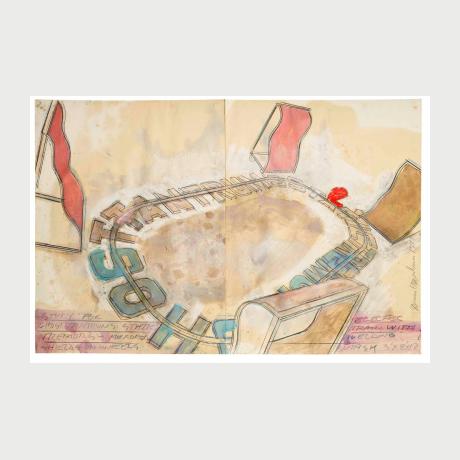DENNIS OPPENHEIM - AN INNOVATIVE AND RESOURCEFUL ARTIST
Artist researcher, both empirical and scientific, a utopian visionary, the American Dennis Oppenheim, had established himself as one of the pioneering artists from the decade of the 1960s, having introduced radical, new-ways of visual perception and behaviours.
His artwork - disparate and eccentric, exploratory and enigmatic - constantly challenged the traditional concept of sculpture. Emphasizing visualised projections of metaphorical ideas, he deletes space where, in an almost alchemical process, he activates the amalgamation and denaturation of various fields, such as architecture, theatre, science, technology, nature, psychology and magic. Through this diverse perspective, he taps into a universal and temporal dimension.
In the United States, at the beginning of the 1960s, art underwent a decisive transformation, as sculpture was re-established as both a starting point and a point of reevaluation of the relationship between the world and humanity. From 1966, Oppenheim had adopted a critical attitude and a provocative stance. With radical methods of mental activation, he questioned the status of art and its boundaries, the role of the artist, and the concept attributed by the creator of the work. At the end of the 1960s, the era of the “Land Art” movement, Dennis Oppenheim found his liberation close to nature. All these means and raw materials, landscape, earth, natural elements replaced conventional materials.
The first Earthworks were presented as ephemeral interventions into natural landscapes, which were then exhibited in the form of photographic documentation. They functioned only visually, intensifying the ambiguous meaning of their symbolism. What we see is the work or simply a piece of information related to its actualization? Αυτό που βλέπουμε είναι το έργο ή μία απλή πληροφόρηση σχετικό με την πραγματοποίηση του./; Between imagination and reality, the viewer does not receive any evidence of his/her existence. Researcher of the science of the earth of tectonic, natural, and geographical dimensions, Oppenheim extols the infinite, as well as the secrecy of the natural landscape. He carves the imprints of the numbered stones on the endless journey of time, he measures space and distances with the insertion of recording and signalling instruments, he pits physical movements against the physical reality of space.
His diverse designs are “models” and imprints of sculptural installations, transferring the functions of composition and the detailed documentation of the work’s “mechanical” core.
The interior of the structure is thus revealed with dynamic “rotating” motions, capturing the different dimensions of the “motorised” sculpture. Anthropomorphic, zoomorphic or “mechanomorphic”, Oppenheim’s works emit a dynamic aura with a strong sense of the “comic” and the unpredictable. Stationary or in motion, these peculiar forms of artwork arouse all the senses and energise the domain of paradox and eccentricity.
Dr. Sania Papa
Art historian
Lecturer, School of Visual and Applied Arts, Faculty of Fine Arts, Aristotle University of Thessaloniki







